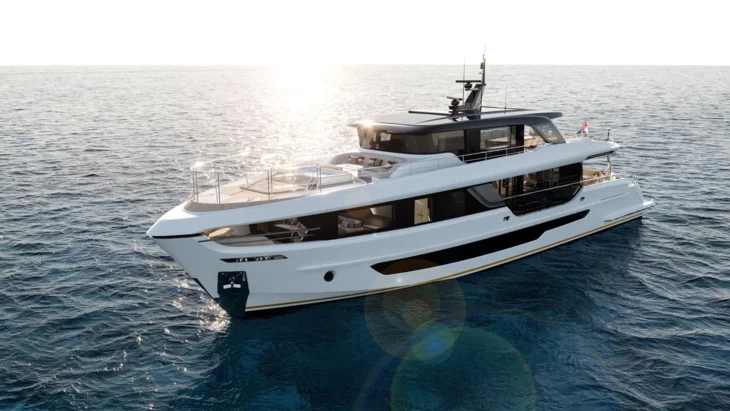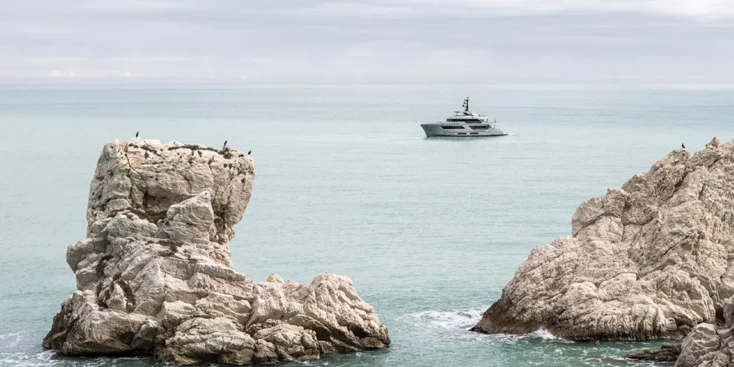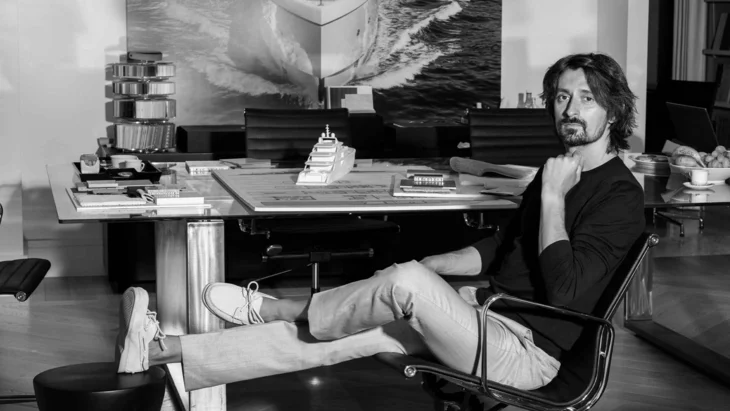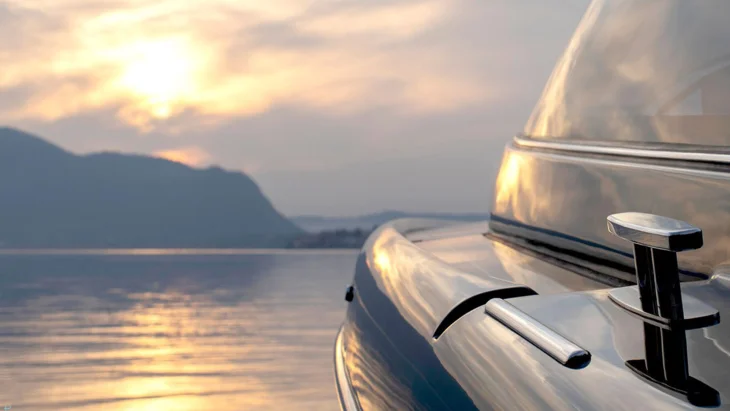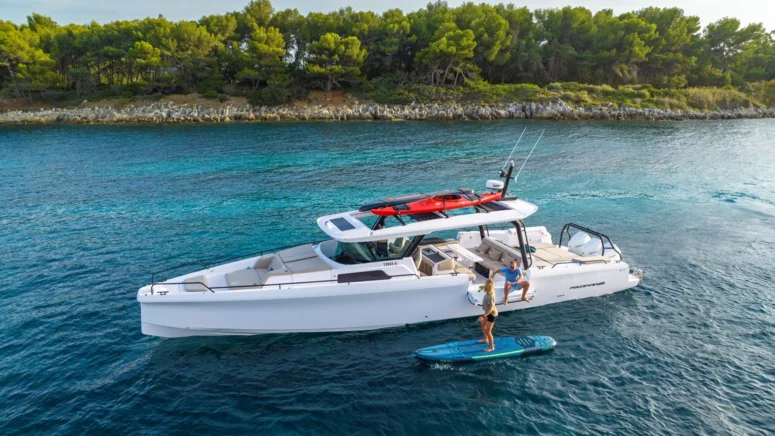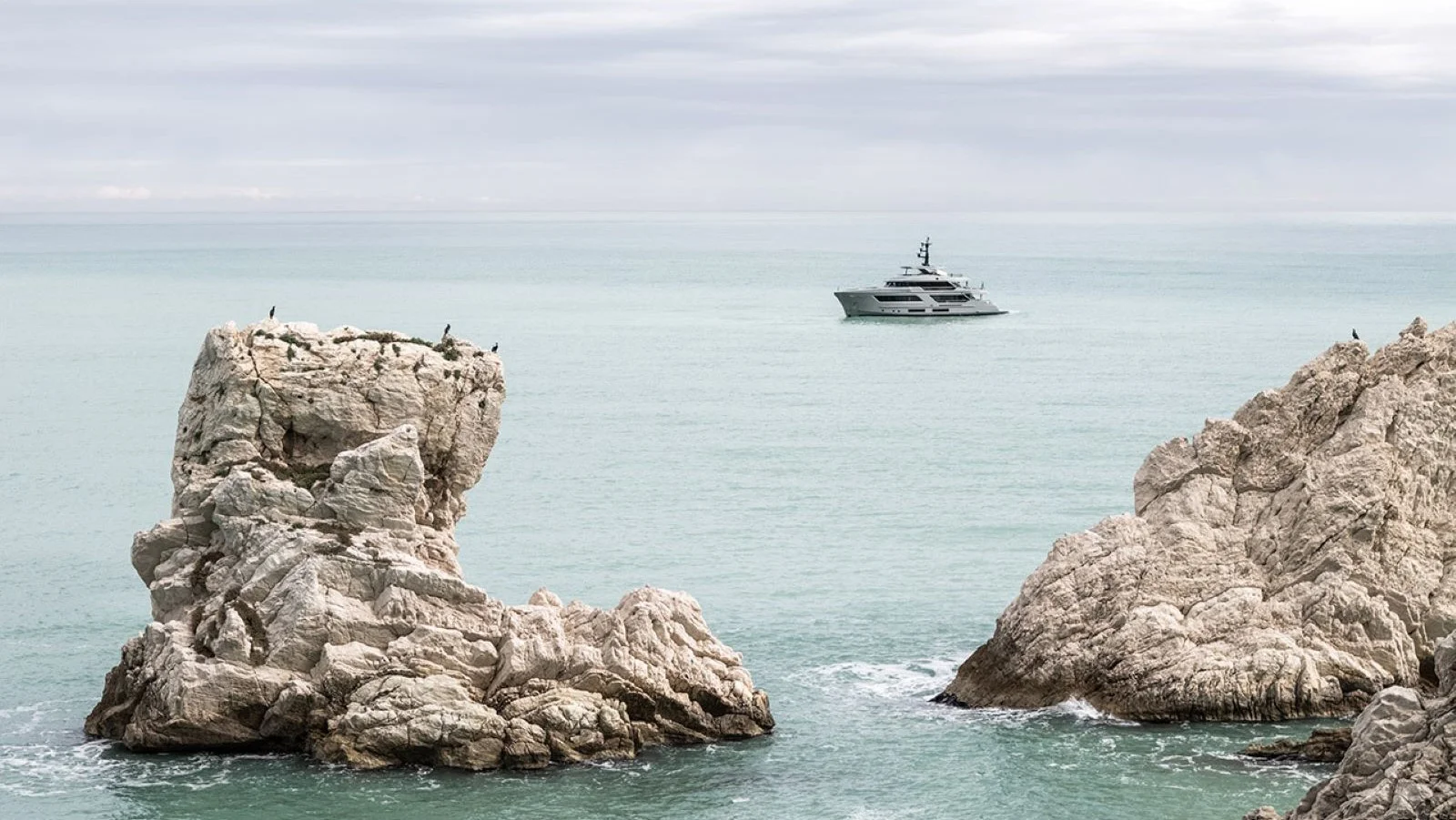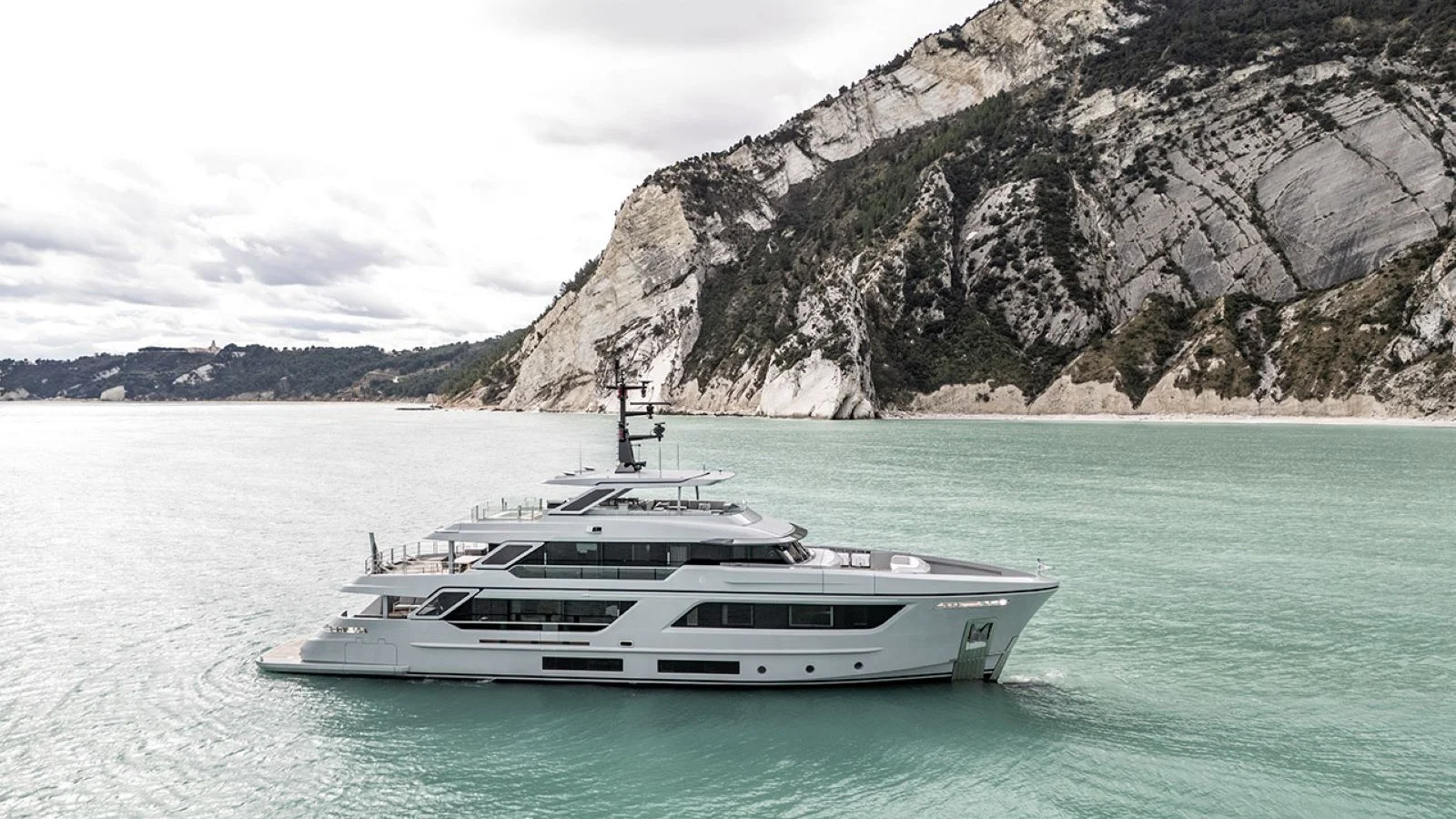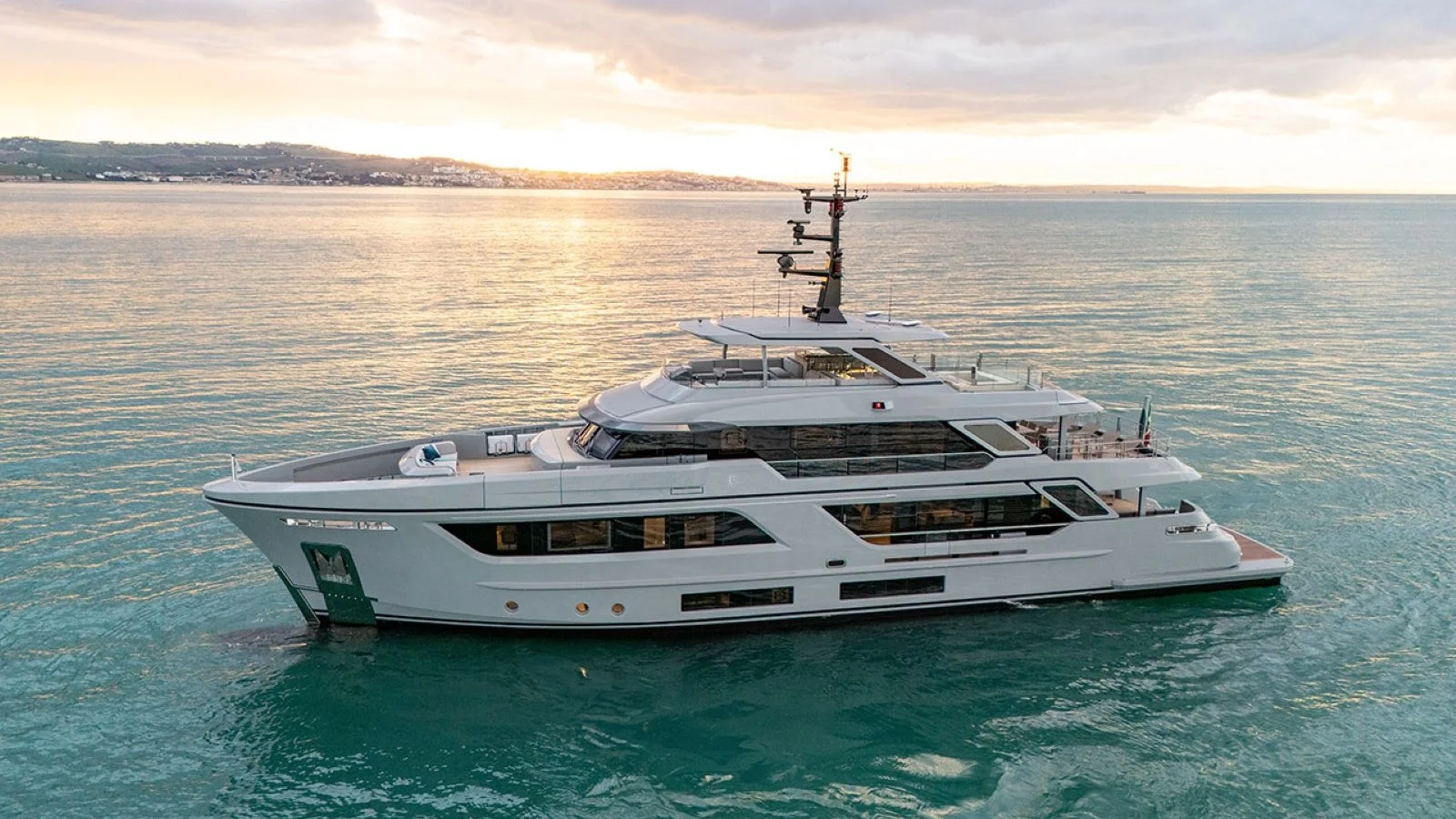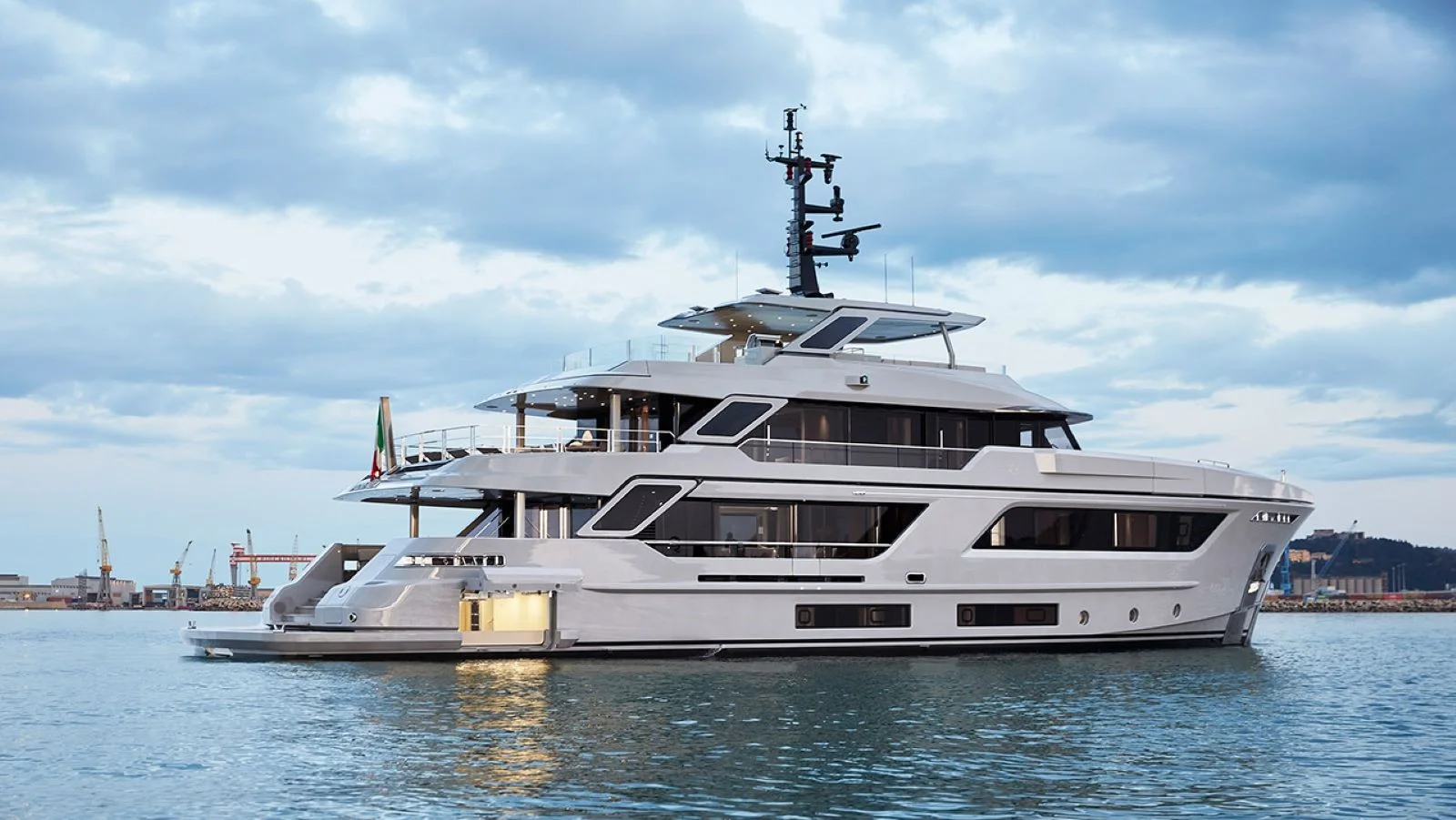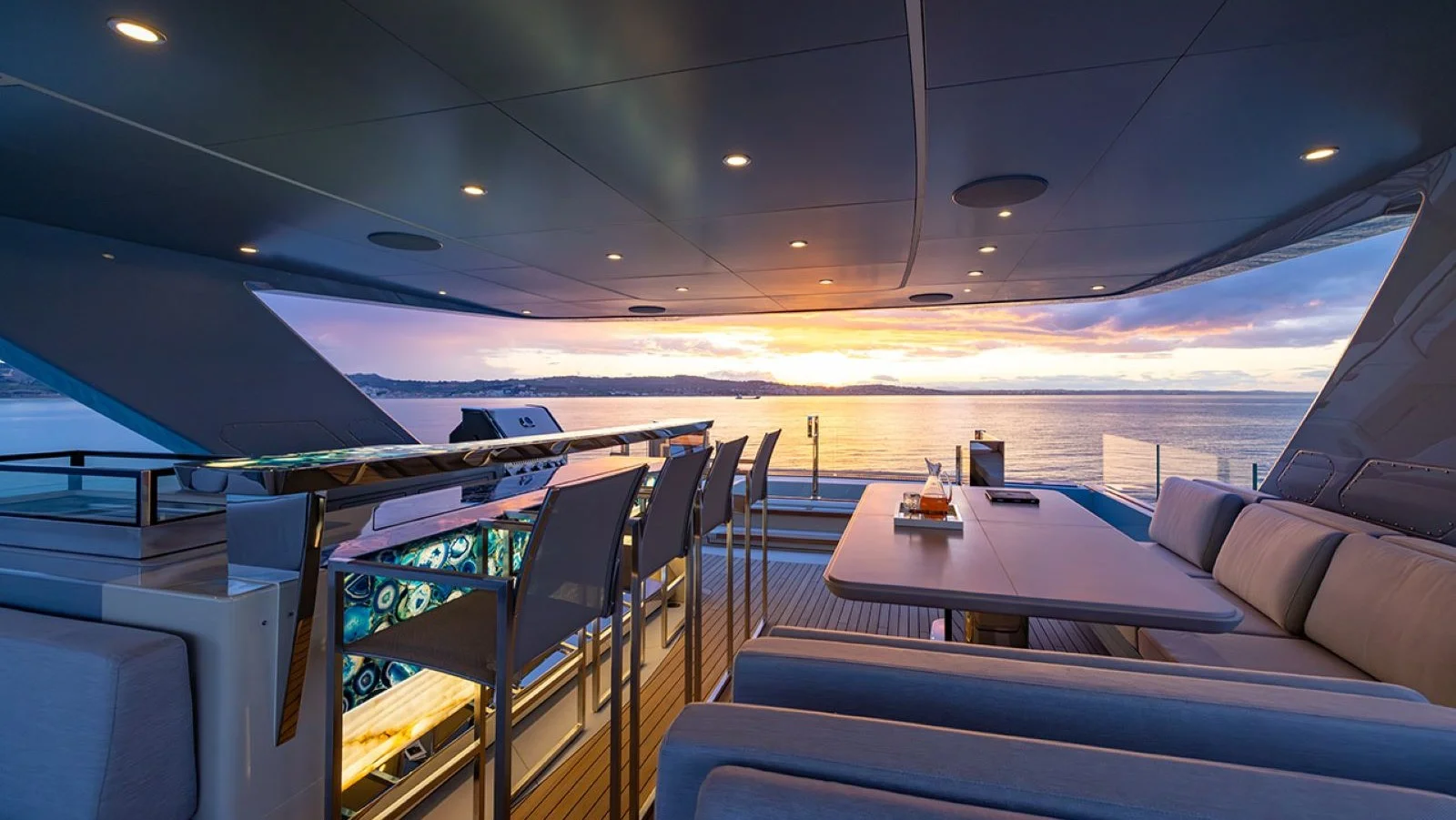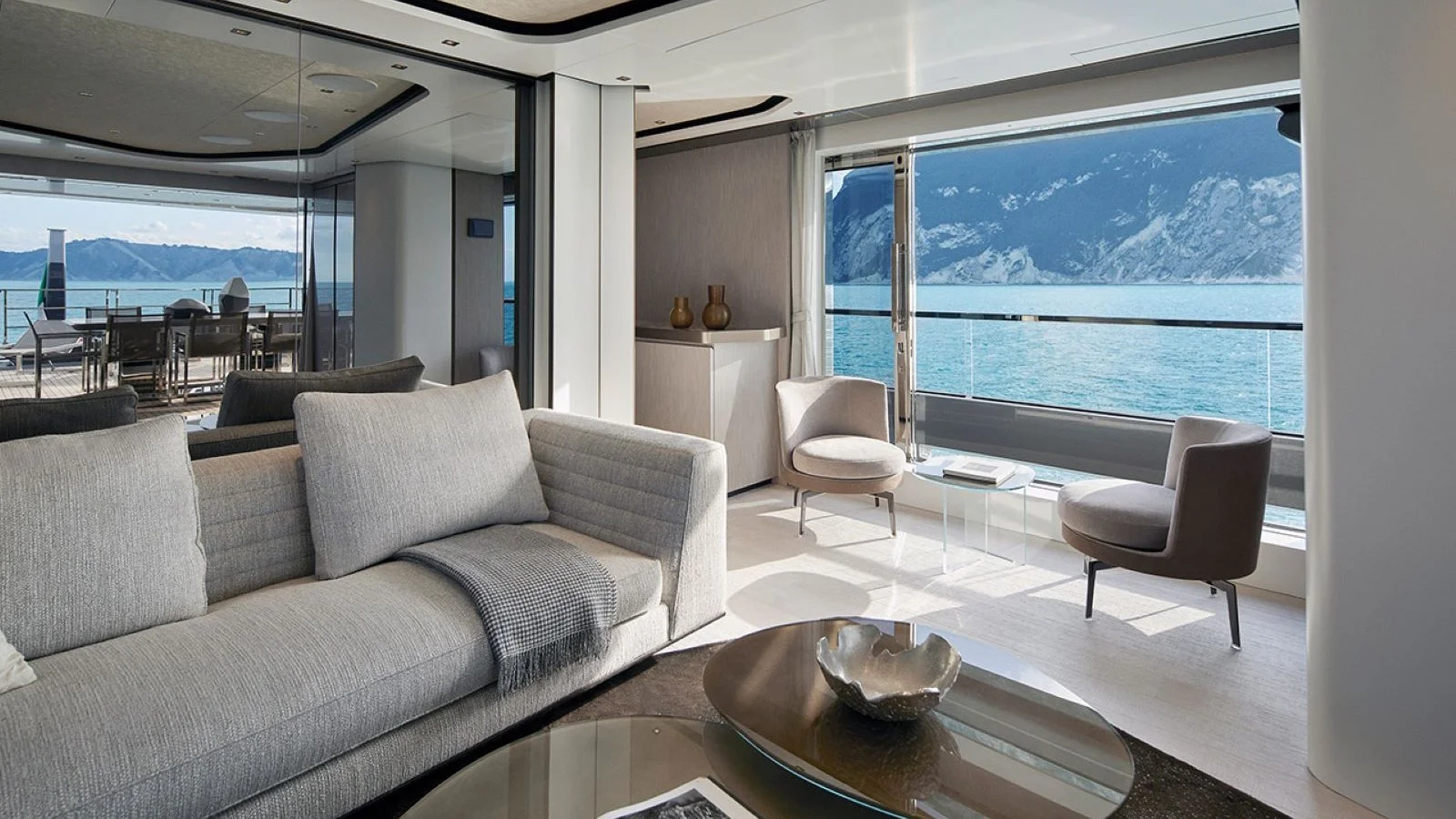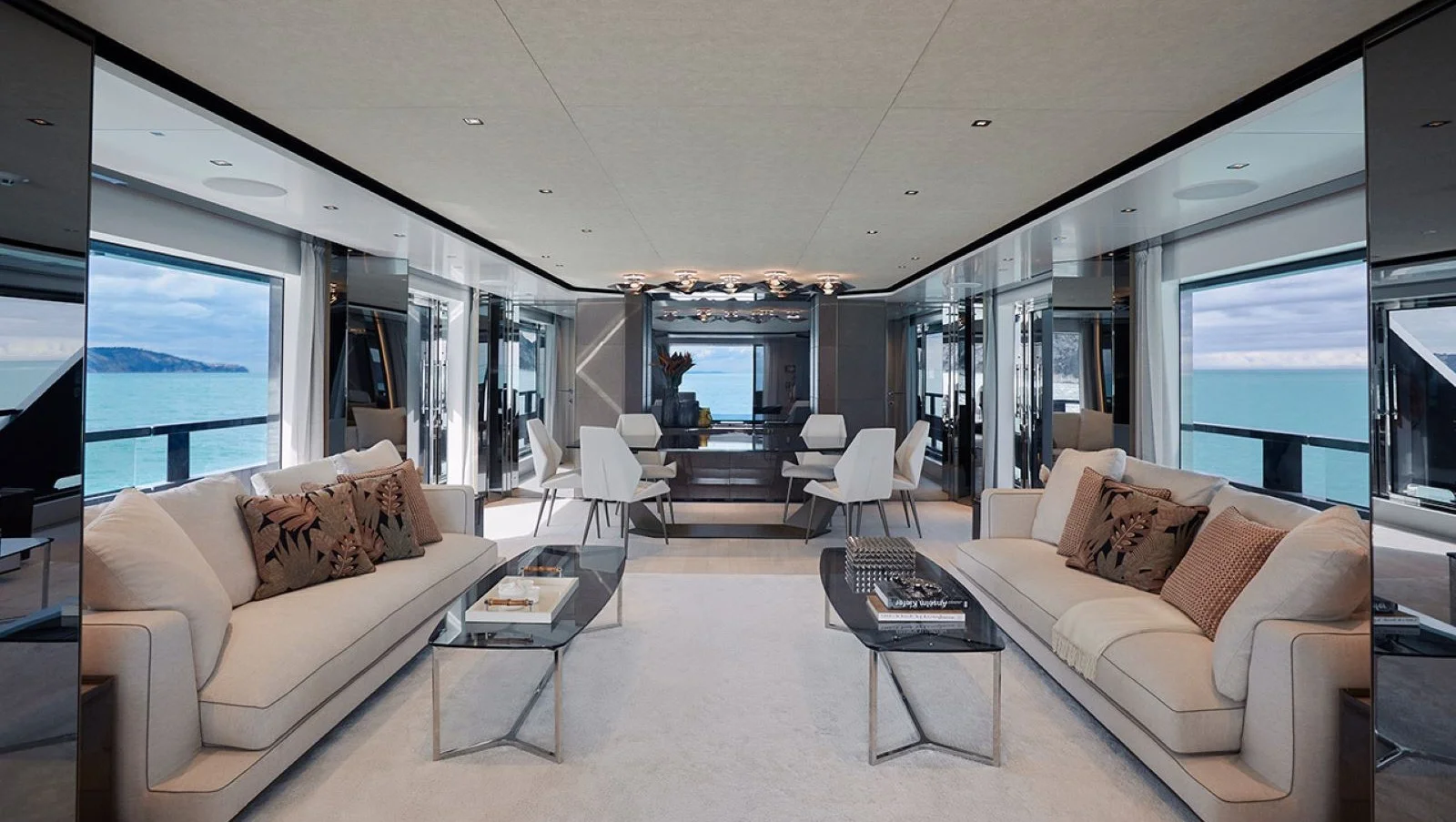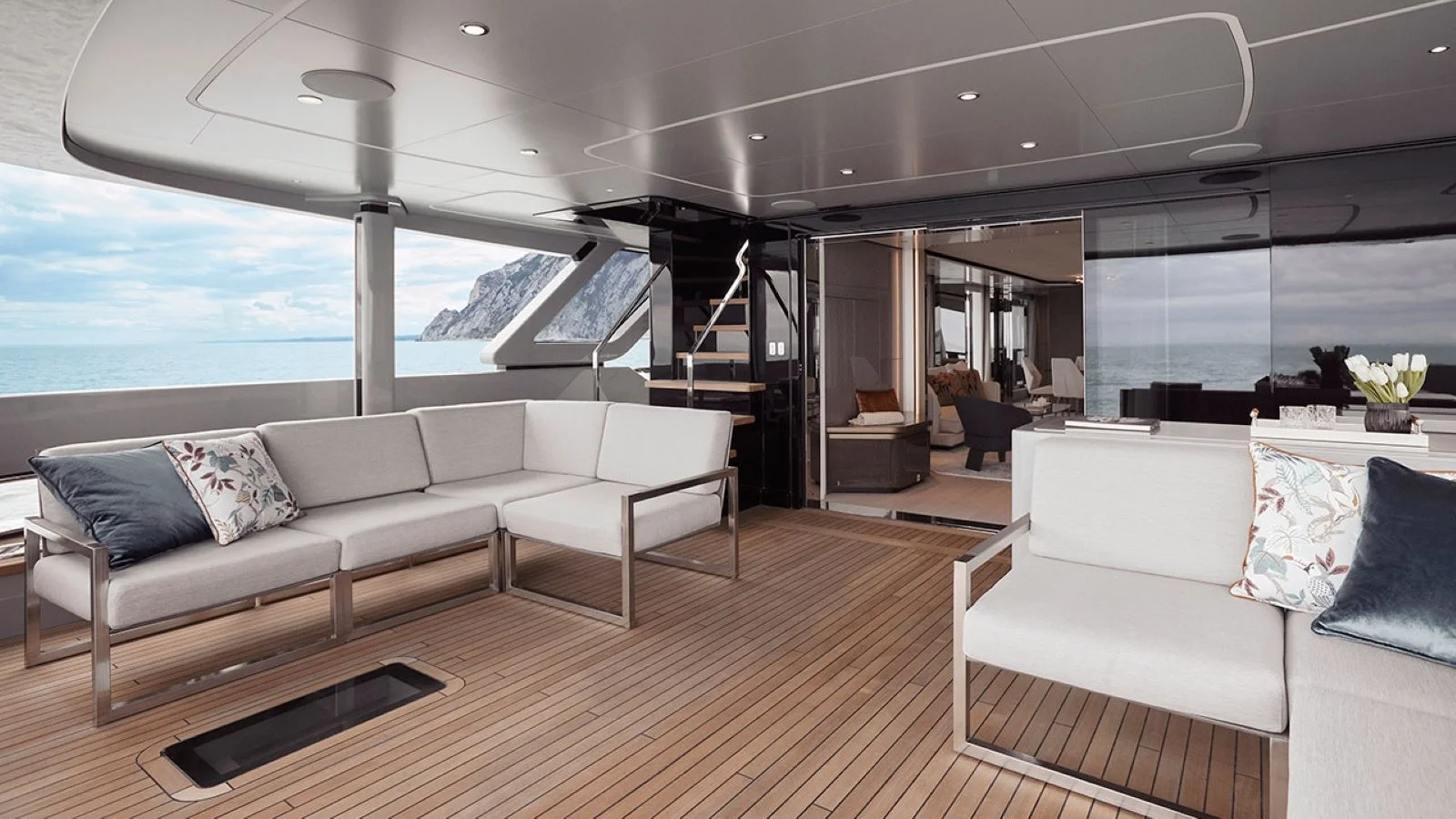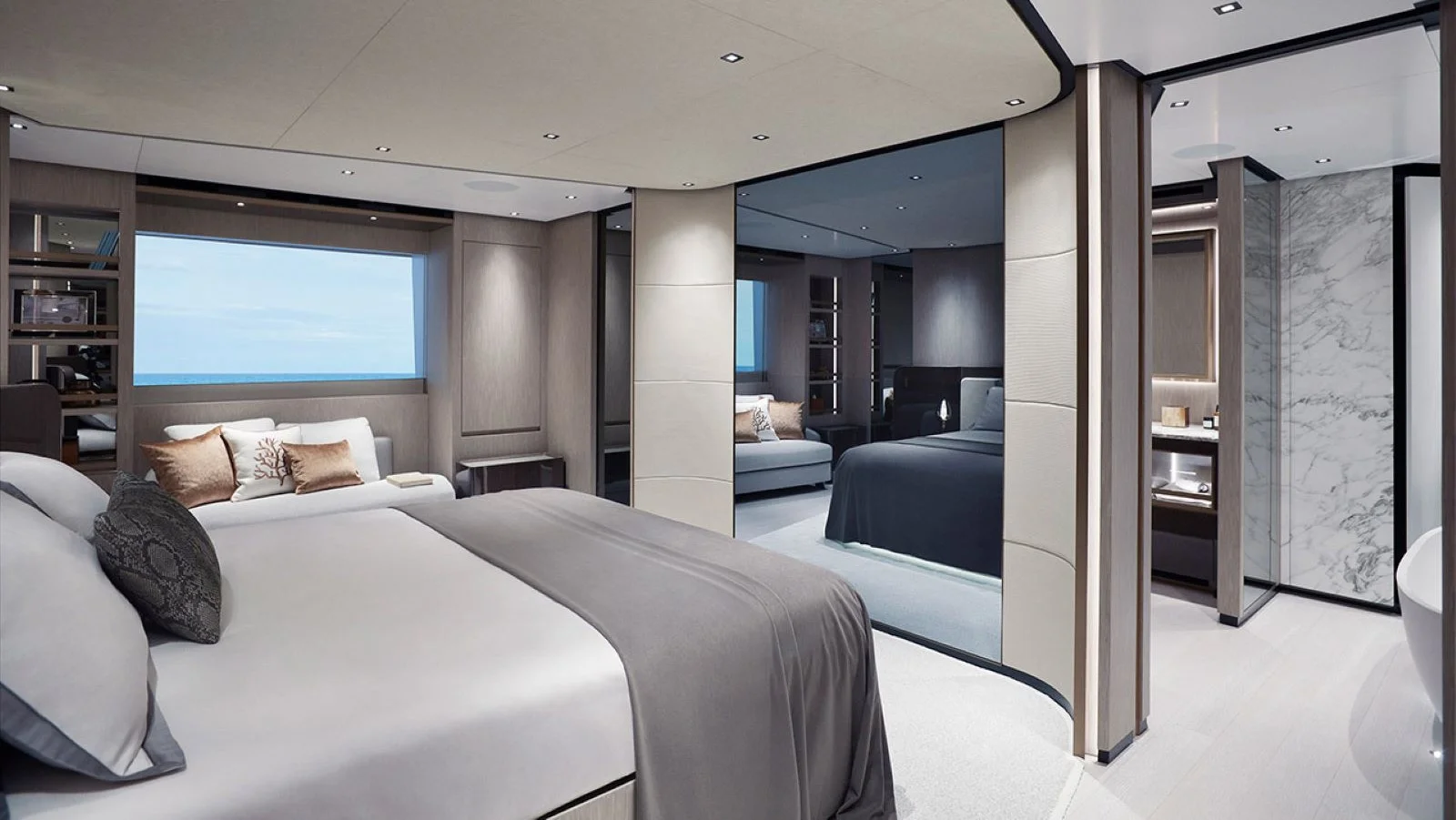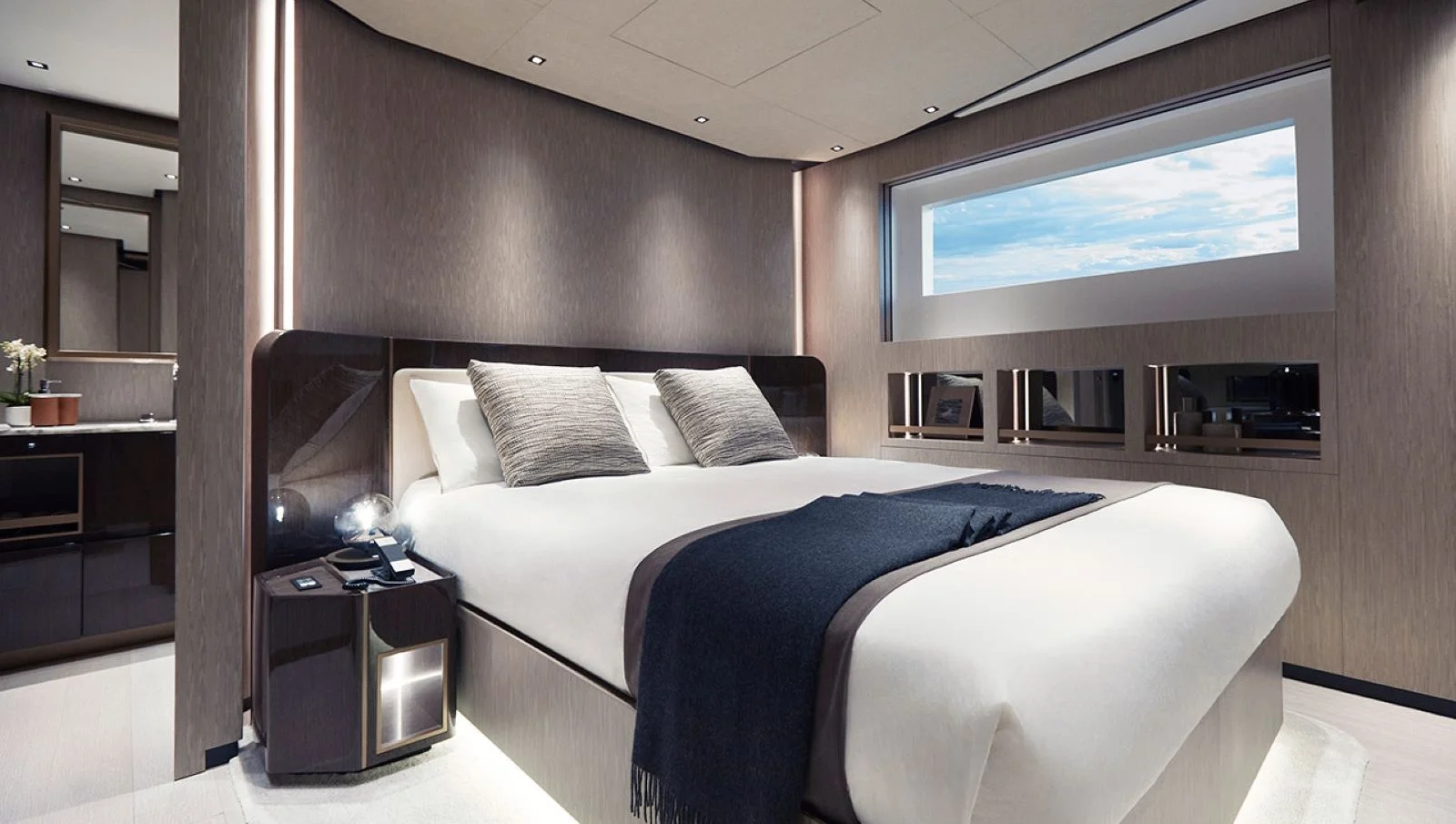An expedition yacht unlike an explorer
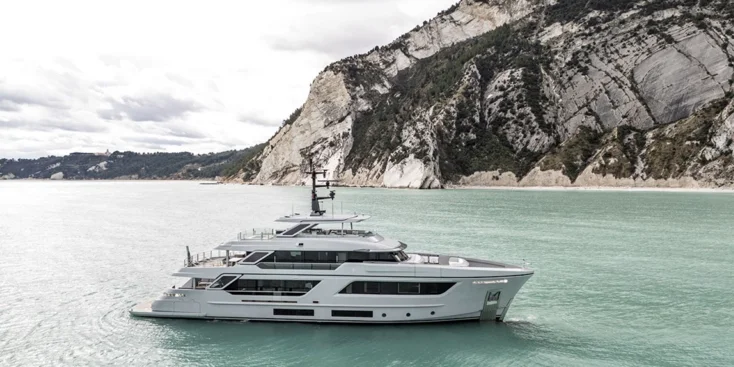
According to Cantiere delle Marche, RJ series highlights their “dedication to pushing boundaries of what a yacht can be, creating new categories that reimagine the possibility for contemporary yachting”
It might seem that the very idea of expedition yachts sets rather strict limits for their design. The priorities are seaworthiness, reliability and functionality, which explains the fact that most of them look pretty similar. So, what is so unusual about the ideas suggested by Francesco Paszkowski, creator of Cantiere delle Marche RJ 115 series, that makes them a new word in this conservative sector?
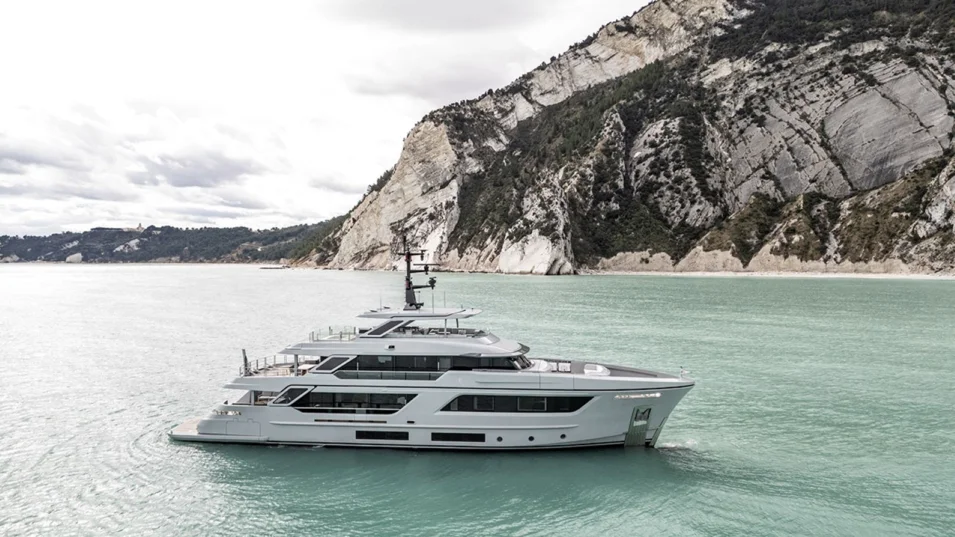
Design and naval architecture
It is all about the exterior. Preserving all the features of true explorers mentioned above, RJ yachts do not look like commercial vessels at all. Their elegant look is almost no different from fashionable Mediterranean cruisers. There were three models in the RJ series: in addition to two RJ 115 hulls, there is a recently launched RJ 130 named Nuri (39.42 m), while the flagship RJ157 (47.74 m) is currently in build at the yard’s facility in Ancona (Italy).
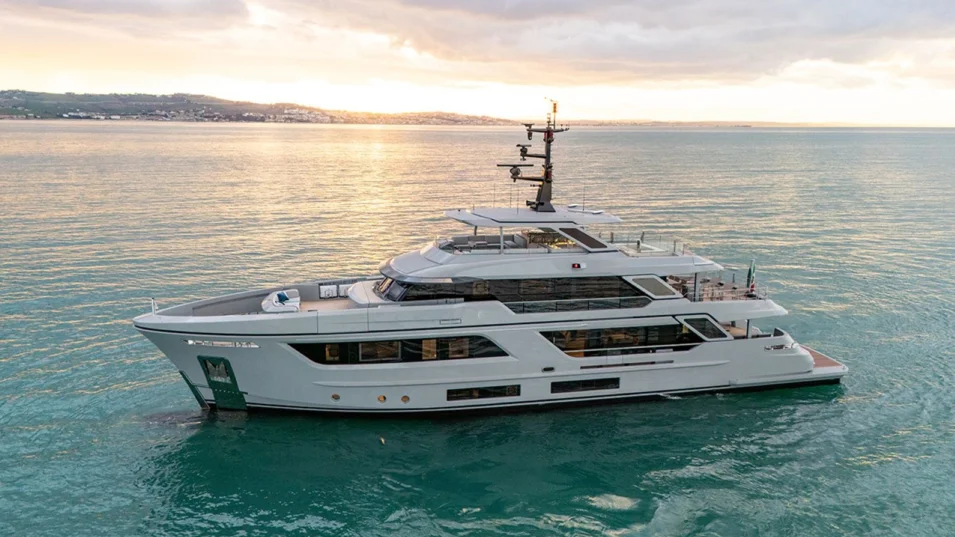
The new RJ 115 named Pazienza has a steel displacement hull and an aluminium superstructure. The naval architecture from Sergio Cutolo and his Hydro Tec studio is classic: a hard-chine hull with a bulbous flared bow allows her to stay stable in the most complicated weather conditions. With rather a compact length of 34.86 m, the beam of 7.50 m ensures the yacht has a decent internal volume (300 GT) and rather generous living spaces on board.
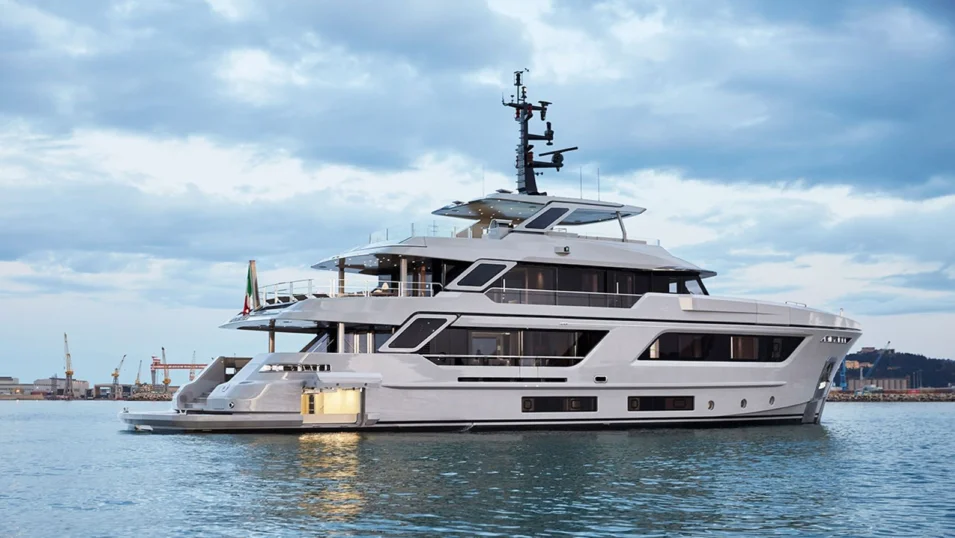
At the same time the “muscled” hull does not look heavy at all, thanks to the elegant profile of the superstructure and expansive glazing. For example, rather high bulwarks that reach the upper deck forward, are masked with a contrasting “ribbon” of tinted glass integrated into the hull structure. In addition to the aesthetic role, it fulfills the practical functions of providing visibility and protecting from the wind and splash. The same can be said about the fashion plates, which “stitch” the entire superstructure diagonally and make the construction look elegant, while the semi-transparent inserts protect, but do not isolate from the outer world.
Performance
Abundance of exterior recreation areas makes the Pazienza an ideal place for living the dolce vita in the Mediterranean traditions. At the same time, she is a true explorer in terms of her range. Twin Caterpillar C18 Acert engines with a total power of 1430 hp and two Kohler generators, providing 80kW each, as well as a fuel capacity of 49 382 litres allow her to cross the Atlantic without refuelling. At the economical speed of 10 knots her range is 5500 nautical miles. The top speed is up to 14 knots, and the cruising speed is 12. So, the yacht is fully compliant with the classic “go-anywhere, do-anything” motto.

Upper deck and sundeck
One of the most attractive spots for relaxation on board is definitely the sundeck. In the shade of an impressive hardtop there is a comfortable seating group with an upper helm station, a dining area with a large table and a bar with a barbecue opposite. The sunny side of the deck is large enough to accommodate a jacuzzi and a couple of sun loungers.
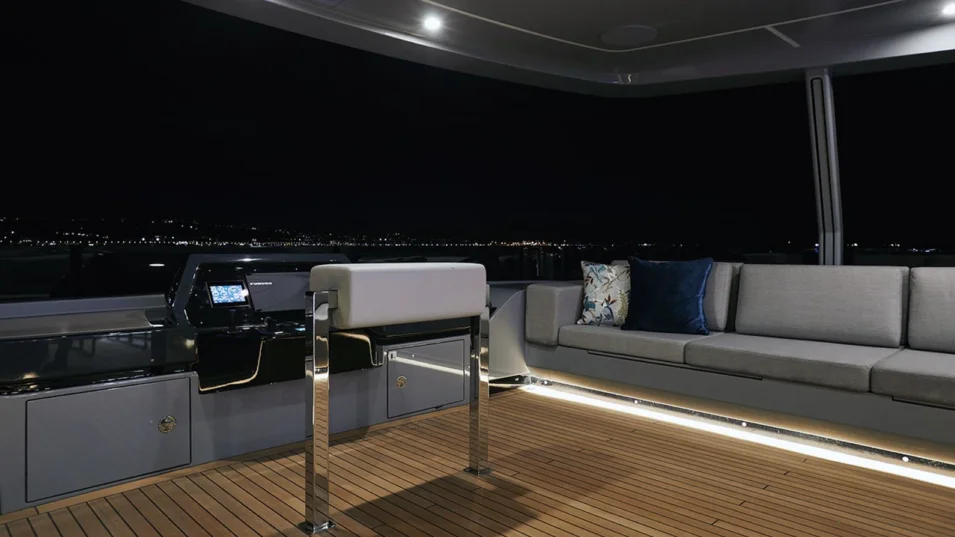
One can also sunbathe “one floor down”: there is a large sofa on the foredeck, and sunbeds on the aft terrace. There is another al fresco dining area sheltered by the sundeck overhang. The same overhang conceals a two-tonne Sanguineti crane: during long voyages the sun loungers are removed and one of the two tenders is retrieved with its help for storage.
Behind the tinted windshield there is a helm station with large Furuno-Boning navigation systems. It looks particularly impressive thanks to the Penelopeoggi leather used for the flooring and console.
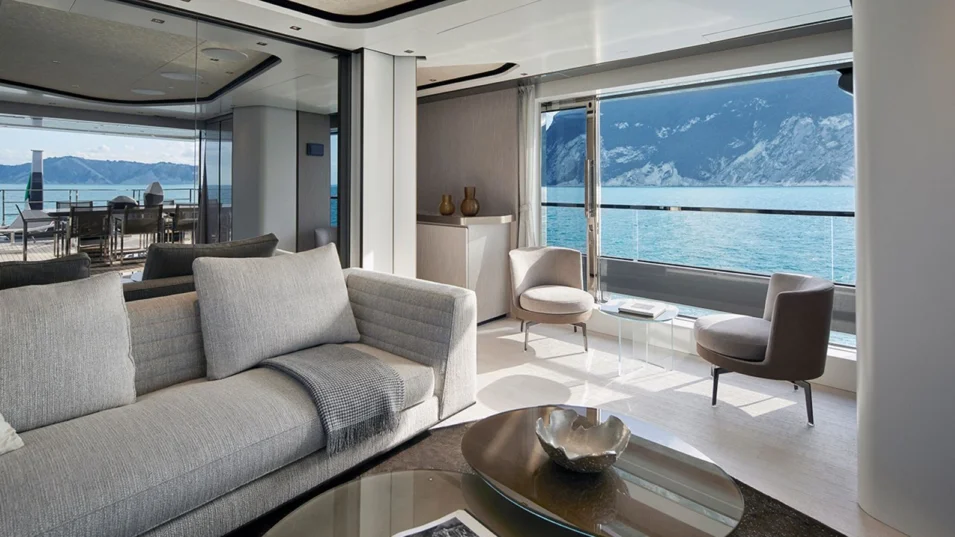
The captain’s cabin is located below deck to dedicate this part of the superstructure to a VIP cabin and a saloon / cinema. Just like the saloon on the main deck, it can boast a semi-panoramic seaview thanks to the floor-to-ceiling windows. The bulwarks have been intentionally lowered here not to obstruct the seascape.
Main deck
The size of the main saloon is impressive, but it feels even more voluminous and airy thanks to a smart interplay of colours and light. The predominant matte white (ceiling, floor, curtains, furniture) contrasts beautifully with the glossy black of the wall inserts, crystal-like lamps, and a dining table that looks like a grand piano lid. Rather a strict colour palette is diluted with just a few accessories like pillows or ceramics of woody shades. Additional spot lighting creates a feeling of a sunny day even in cloudy weather.
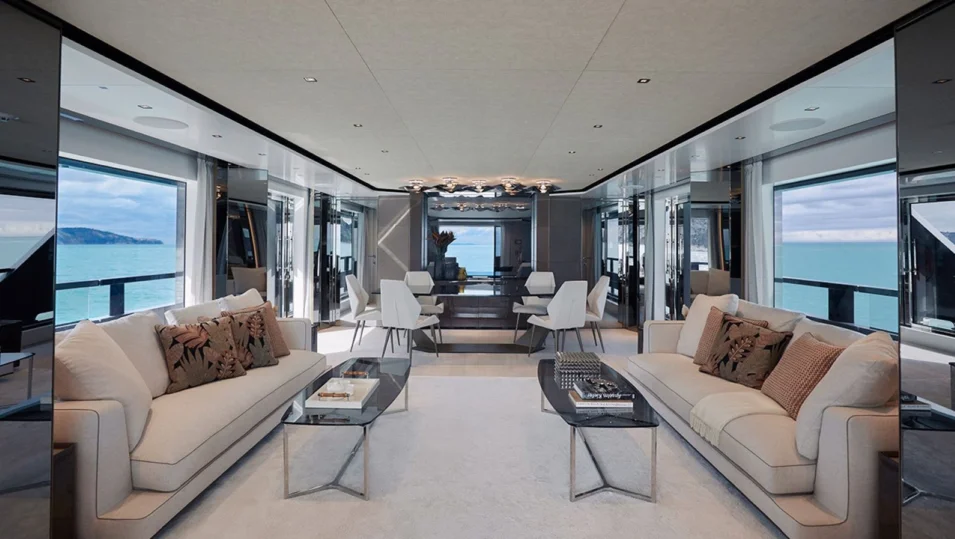
The furniture arrangement is symmetrical: on both sides of the access from the cockpit there are two generous Maxalto sofas with coffee tables, followed by a dining area in the centre. The Flexform table for 12 people and unusually shaped Origami chairs from Reflex look like works of art. It’s not for nothing that Francesco Paszkowski, who is in charge of the general exterior and interior styling of the yachts, has been entrusting the interior design to his colleague Margherita Casprini. She has chosen the furniture, textiles and décor for the Pazienza, just like for other projects of this creative duo, inventively and with immaculate taste.
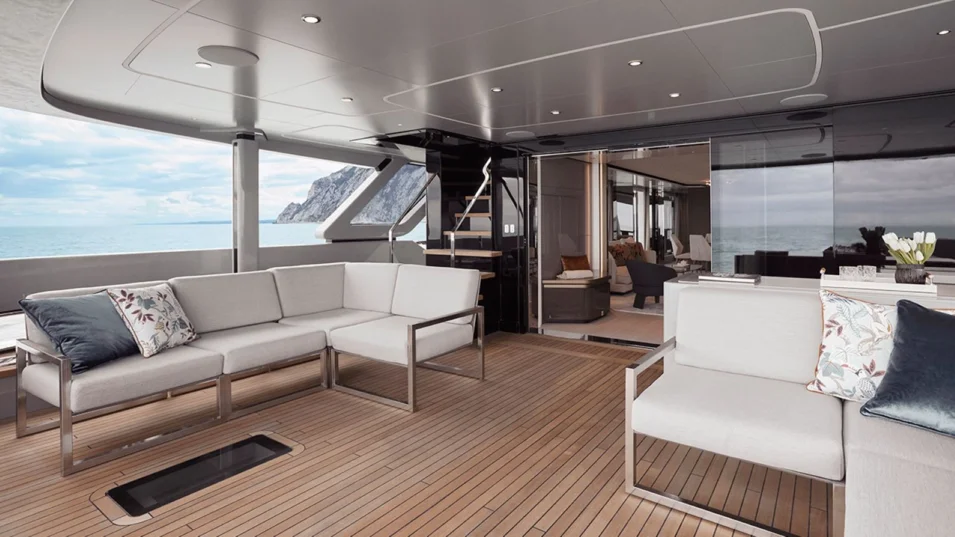
The sliding glass doors from the saloon open to an aft cockpit. There are sofas on both sides here, and a broad teak stairway leading to the bathing platform that can rise like a transom door, giving access to a sauna and a garage.
Moving forward from the saloon, one gets into a sparkling hall with a marble spiral stairway that connects all the decks. On the portside there is a galley with an access to the crew area below. The yard makes a special emphasis on the fact that the kitchen equipped with Miele appliances boasts additional fridges and freezers for more supplies for longer journeys. On the starboard side there is an access to the master suite that takes up the entire bow section of the main deck. On the way to the bedroom there is a dressing room and a mini office with a desk.
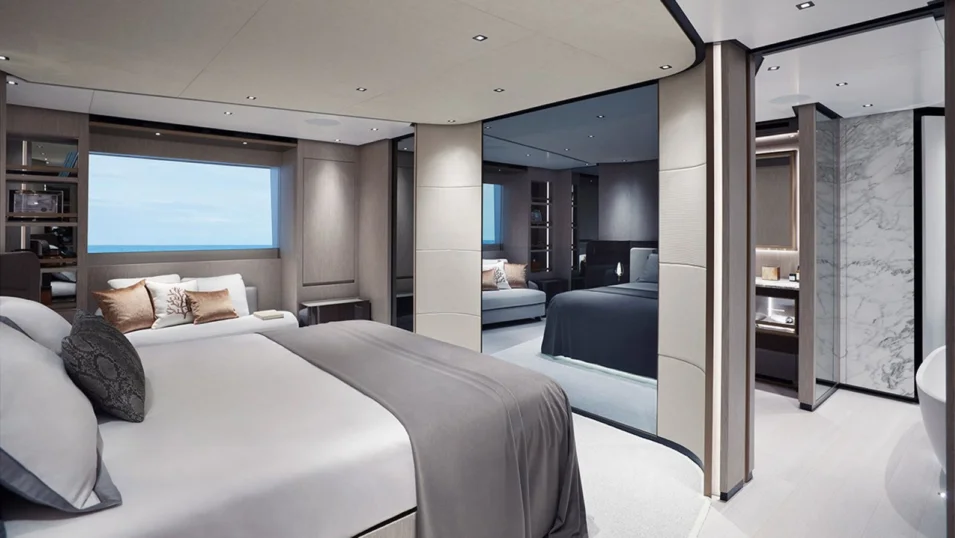
The partition wall at the bed’s headboard rounds off at the edges, and the same shape is echoed in the wall opposite, behind which there is a bathroom with a light Calacatta Grey marble finish. This architectural trick creates a feeling of more privacy of the sleeping place, as there is also a sofa, a vanity table and bookshelves here. The colour palette features mainly light beige and brown shades with some red accents.
Lower deck
A similar soft palette can be found in the four guest cabins below deck: gray, sandy, bluish and chocolate tones make each of them individual. There is a Pullman bed in one of the cabins, so the number of guests that can be accommodated increases to 13.
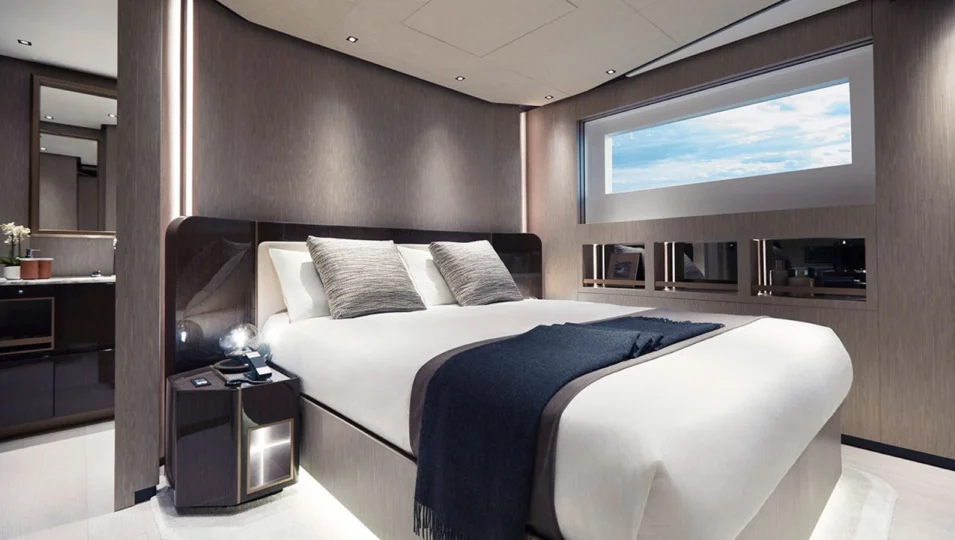
As for the crew, the Pazienza needs just five, including the captain. The bow section of the lower deck is dedicated to the crew, with a separate access, a galley, a saloon / dining room and utility rooms.
Vasco Buonpensiere, CEO of Cantiere delle Marche, is confident that RJ range has brilliant prospects: “We are very pleased with the commercial results of the RJ range. It demonstrates that style and elegance can be perfectly combined with the rugged character typical of our explorer yachts. Regardless of the model or size, these boats are ideal for venturing into remote areas where assistance is scarce or even nonexistent. An increasing number of owners have realized that combining comfort and design with construction features and technical equipment that ensure safe navigation is a winning choice.”
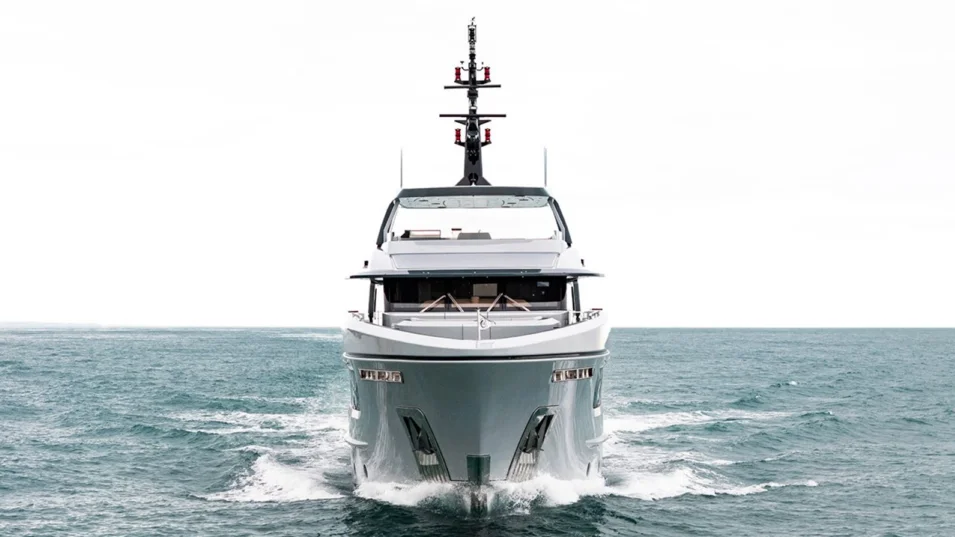
You have successfully subscribed to our newsletter
